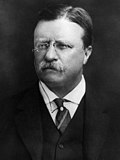| |||||||||||||||||||||||||||||||||
| |||||||||||||||||||||||||||||||||
 County Results
| |||||||||||||||||||||||||||||||||
| |||||||||||||||||||||||||||||||||
| Elections in Maine |
|---|
 |
The 1912 United States presidential election in Maine took place on November 5, 1912, as part of the 1912 United States presidential election which was held throughout all contemporary 48 states. Voters chose six representatives, or electors to the Electoral College, who voted for president and vice president. Maine was won by the Democratic nominees, New Jersey Governor Woodrow Wilson and Indiana Governor Thomas R. Marshall. Wilson and Marshall defeated incumbent President William Howard Taft, and his running mate Vice President James S. Sherman and Progressive Party candidates, former President Theodore Roosevelt and his running mate California Governor Hiram Johnson.
Contents
Wilson won Maine by a narrow margin of 2.02%, becoming the first Democratic presidential candidate since Franklin Pierce in 1852 to win the state. This would be the final time until Lyndon B. Johnson won the state in 1964 where a Democratic presidential candidate would carry Maine. This is one of only two such cases since 1852 where Maine has not voted for the same candidate as fellow New England state Vermont, the other being 1968.
This was the only state that Wilson won in either of his two victories that would never support fellow Democrat Franklin D. Roosevelt in any of his landslide victories in the 1930s and 1940s. [1] Lincoln County and Waldo County voted Democratic for the first time since 1880. Androscoggin, Cumberland, Hancock, Knox, Sagadahoc, Washington, and York counties voted Democratic for the first time since 1852.
With 37.41% of the popular vote, Maine would prove to be Roosevelt's fifth strongest state in terms of popular vote percentage in the 1912 election after South Dakota, California, Michigan and Minnesota. [2]
The Maine Republican Party supported Theodore Roosevelt during the 1912 Republican presidential primaries against President William Howard Taft. The Progressive Party was founded by Roosevelt supporters on July 31, 1912, at a convention in Portland, Maine. The Republicans was weakened after losing members including Charles H. Hitchborn, who was the treasurer of the party, although Warren C. Philbrook, the chair of the party, remained. Roosevelt's largest amount of support came from Aroostook County where he received over sixty percent of the vote. Three-fourths of Roosevelt's votes, worth 38,000 votes, came from Republicans while the remainder, worth 10,000 votes, came from Democrats. [3]



